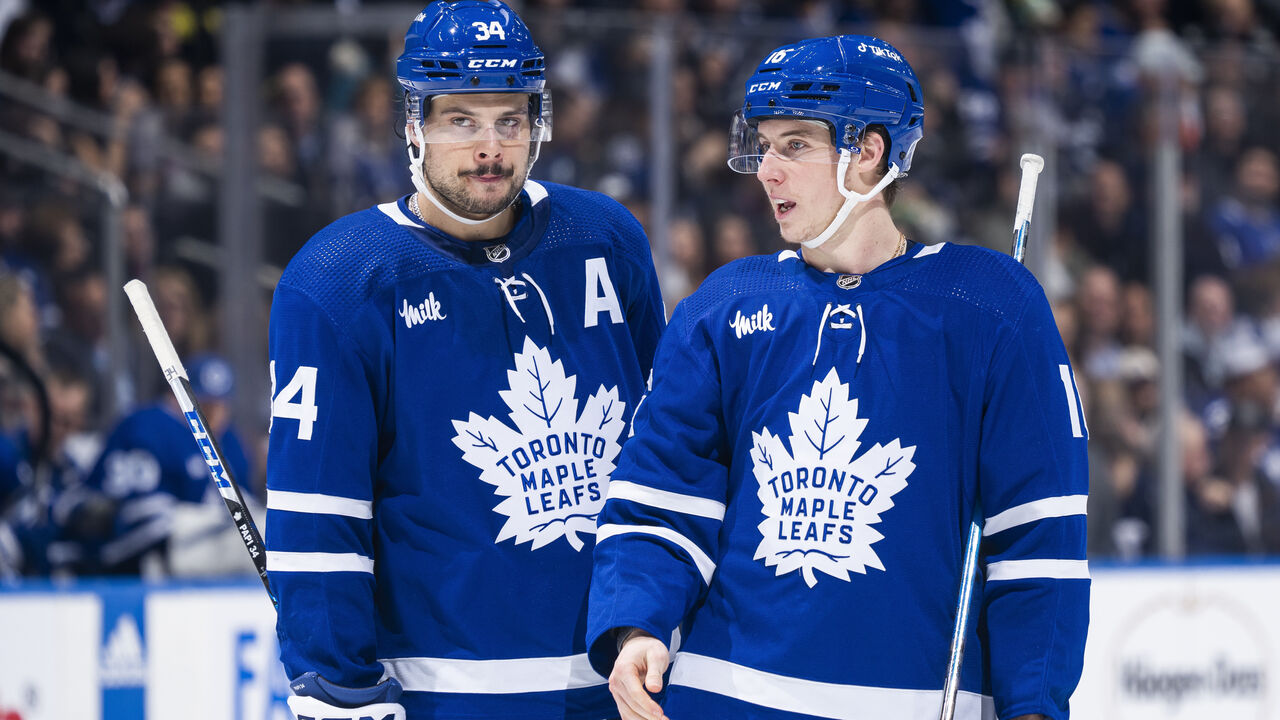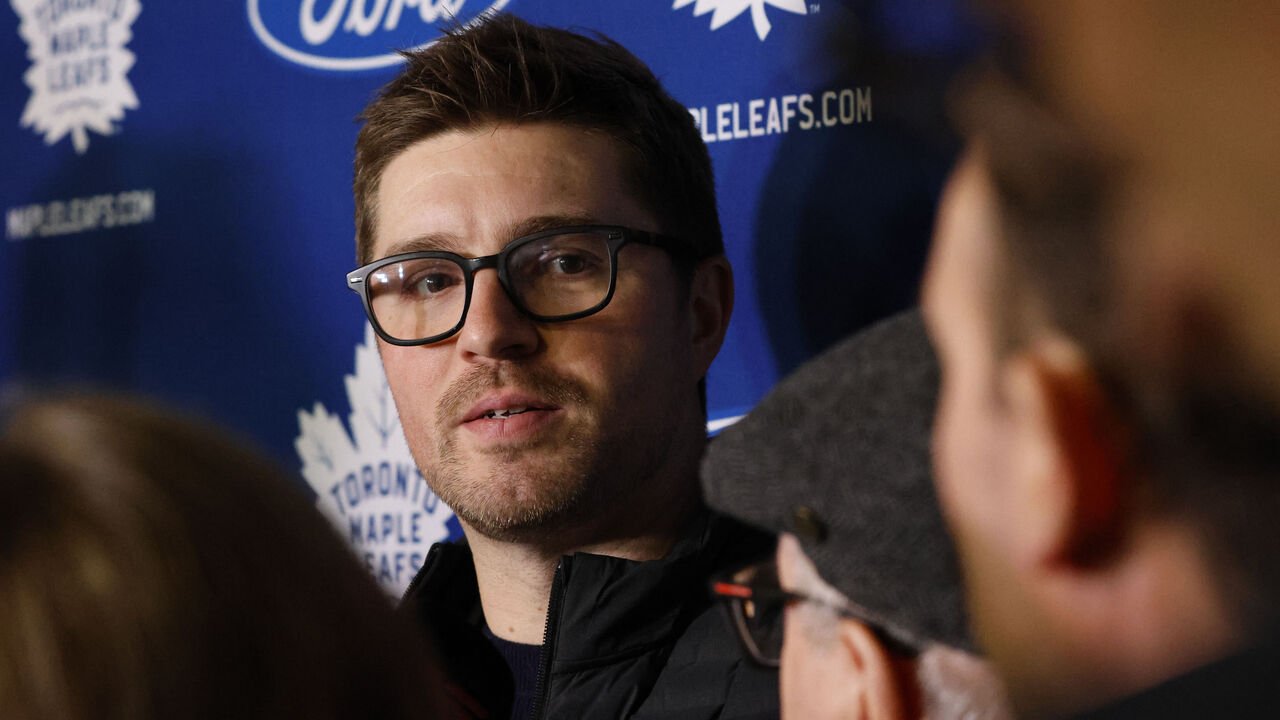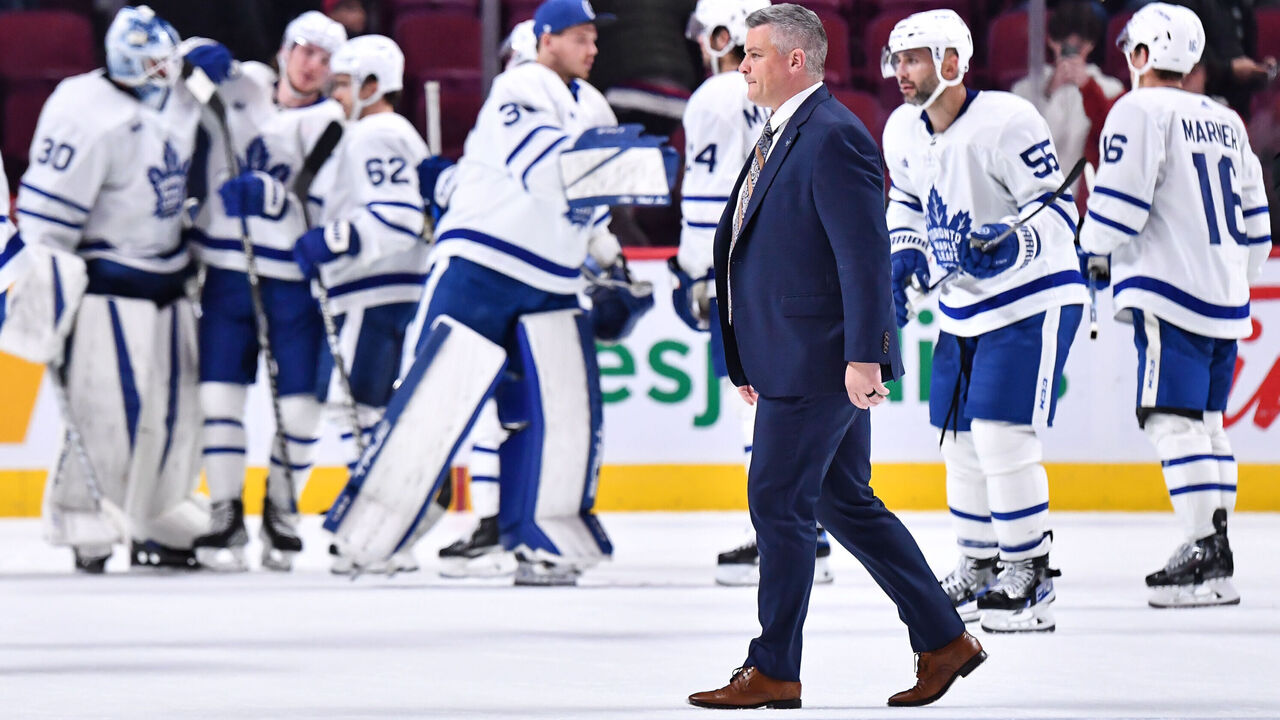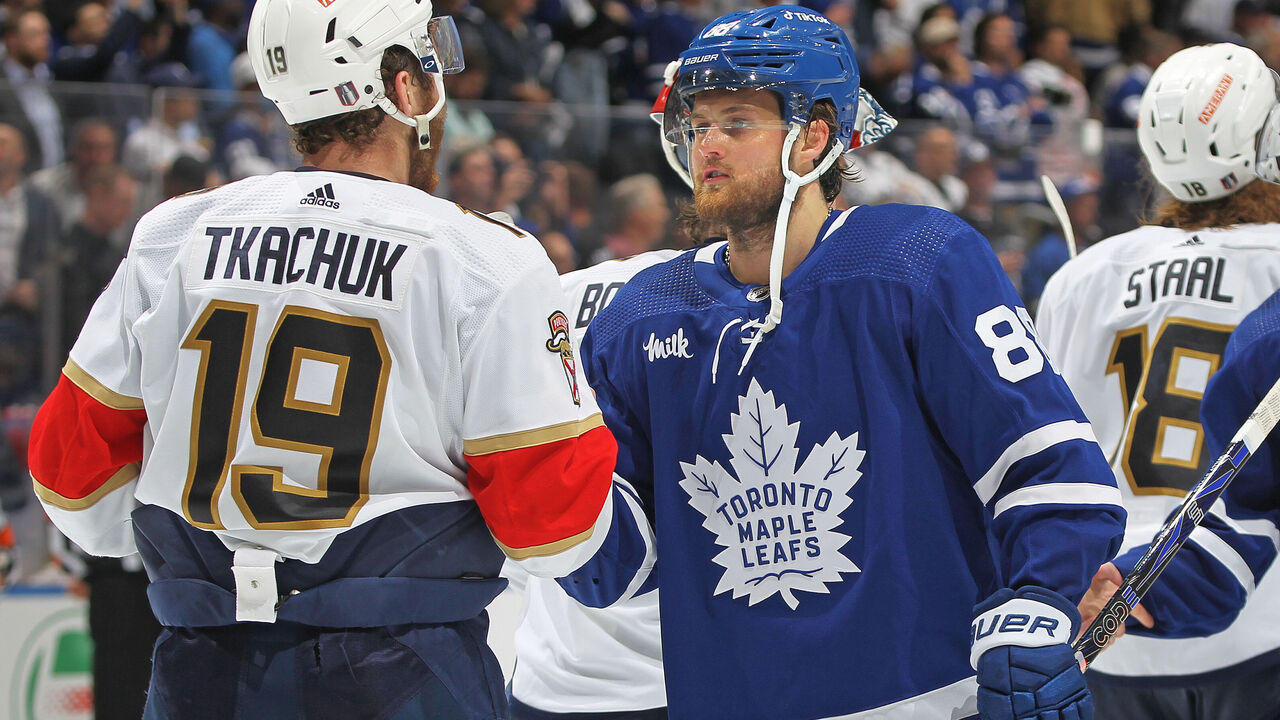Maple Leafs fall in May - again. What's next after latest playoff failure?
One win in five home playoff games.
A measly two goals scored in each of the final seven games of the season.
Just three times in which they definitively outplayed the opposition over an 11-game stretch - the only 11 that mattered out of the 93 since October.
There are countless ways to frame the Toronto Maple Leafs' latest playoff exit, which came at the hands of the Florida Panthers on Friday night in Game 5 of the second round. Yet it all comes down to this simple truth: the Leafs' most successful postseason of the Auston Matthews-Mitch Marner era includes five wins - still 11 short of the tally required to hoist the Stanley Cup.

In other words, the Leafs, for the seventh straight season, weren't even close to completing their preseason objective. An objective that's been elusive for 56 years. An objective that didn't seem preordained with a core of Matthews, Marner, John Tavares, William Nylander, and Morgan Rielly, but at the very least felt within the range of reasonable possibilities.
Who's presiding over the franchise, managing the roster, coaching the team, and slipping on the Leafs crest next season is all hanging in the balance. Changes are inevitable. The severity of those changes is to be determined.
The uncertainty starts at the top. The ownership group, Maple Leaf Sports & Entertainment, can opt for the nuclear option of firing president Brendan Shanahan. The team initiated the so-called "Shanaplan" nine years ago, but three general managers and four coaches on, it has produced one series victory.
Process be damned - that's unacceptable for a club with endless resources.
Shanahan, who's under contract through 2024-25, hasn't done a poor job. The Hockey Hall of Famer's overseen unprecedented regular-season success, and it's not as if he and GM Kyle Dubas haven't adjusted after playoff losses. Sandpaper, defense, leadership, and depth have been added over the years.
A president shouldn't have unlimited runway, though, and Shanahan's coming up on a decade in charge. There's been anger, frustration, and sadness within the fan base for years. Apathy now, too. Moving on from Shanahan would signal a completely new era. A way to save face and chart a different path.

If Shanahan's canned, Dubas and coach Sheldon Keefe likely lose their jobs.
If MLSE sticks to the Shanaplan, Dubas or Keefe, or both, may still get fired.
Dubas, in case you haven't heard, is on an expiring contract. The public has assumed this lack of job security is directly related to playoff success. There's an argument to be made that Dubas excelled in 2022-23 by surrounding the core with layers of veteran support - Ryan O'Reilly, Luke Schenn, Jake McCabe, etc. - and that finally winning a playoff series validates those moves.
But that argument ignores the past. Dubas has been at the helm for five years, and the collection of players he's bet on hasn't lived up to the hype. Devoting half of the salary cap to four players has proven to be an unwise strategy. And while goaltending luckily wasn't a major issue in the postseason, it's fair to criticize Dubas for his offseason acquisition of injury-riddled Matt Murray, who closed out the year as the backup to rookie netminder Joseph Woll.
Make no mistake: Dubas will be highly sought after if he hits the free-agent market. The 37-year-old is well-respected across the NHL, and let's face it, he made far more good moves than bad during his first twirl in the GM's chair.
Consider this, too: Even if the Leafs want Dubas back, he could choose to walk away. It might be a better long-term career move for him to pull the chute on the Leafs experiment and start fresh elsewhere, whether that be in Pittsburgh, Calgary, or another city. His paychecks will be fatter, he'll likely have more autonomy, and he'll be working with a different core.

Pro sports is a results-driven business, and at least one person always pays for a lack of results. It's usually the coach, which means Keefe's job isn't safe, even if Shanahan stays, and, yes, even if his buddy Dubas stays. Keefe, who boasts one of the finest regular-season winning percentages in NHL history yet owns a 13-17 record in the playoffs, is under contract through 2023-24.
Player motivation is part of the coach's job, and Keefe is responsible for a hefty chunk of the Leafs' uninspiring performance in Game 3 versus Florida. He was arguably outcoached throughout this playoff run and past postseasons - for instance, shuffling his forward lines too often or not enough and failing to get his team ready for the relentless Panthers forecheck.
Like his players, Keefe didn't execute to the best of his abilities as the pressure mounted. There was progress this year, but not enough.
After past playoff losses, there were three options: stay the course, tinker through a handful of minor alterations, or turn the page with major changes. This time around, turning the page appears to be the only viable option.
Firing one, two, or three of Shanahan, Dubas, and Keefe would be the start. From there, the Core Five - the four highest-paid forwards and the highest-paid defenseman - probably shouldn't return fully intact. Move one? Two?
Matthews, the team's best player, launched the Leafs' comeback in Game 4 of the first round. He finished with five goals and six assists, or a point per contest, off a league-high 49 shots on goal and 66 scoring chances. Most crucially, though, Matthews failed to score a single goal in the second round.

Marner, the team's top point producer in the regular season and playoffs, scored the game-winner in the club's lone second-round win. He was also the biggest no-show of any Leafs star in Wednesday's painfully poor Game 3.
Tavares notched the series-clinching goal in Round 1 and won some key faceoffs. Otherwise, he continued to show signs of decline. Nylander, snakebitten before scoring in back-to-back games to end the season, was consistently dangerous. Rielly, meanwhile, was a puck-hungry menace all postseason, contributing 12 points from the back end, many in clutch moments.
The collective performance of Toronto's five top players was far from terrible. But it wasn't quite strong enough in gut-check situations. Again. And now the clock is ticking. In a matter of weeks, we'll find out plenty about the long-term plan.
Matthews, who turns 26 in September, and Nylander, 27 as of May 1, are both eligible to sign new contracts on July 1. Matthews' current deal includes a no-move clause in the final year, while Nylander's has a 10-team no-trade clause.
Marner, who turned 26 last week, and Tavares, 33 in September, each have two seasons remaining. Tavares' deal includes a no-move clause for all seven years, while Marner's no-move clause kicks in - conveniently - on July 1.

The Leafs, regardless of who's in charge, will probably view Matthews as an untouchable in trade talks. What's going on inside the superstar's head is just as relevant, though. Does Matthews want to stay in Toronto? If so, does he truly believe the Leafs can win a Cup? The same questions can be applied to Nylander, the favorite whipping boy for a segment of Leafs Nation.
Perhaps Nylander wants to play out his final year and then take his talents elsewhere via free agency. Or maybe the front office, which is handcuffed by Tavares' undesirable contract and likely uninterested in involving Rielly in trade talks, can shake up the core by shipping out Nylander. Or Marner. Or both.
No matter what route it takes, the front office will need to get creative.
The downside of trading Nylander and/or Marner: It'll be difficult to win the trade(s). The Panthers did something similar last offseason, sending longtime core member Jonathan Huberdeau to the Calgary Flames in a blockbuster that brought back 2022-23 Hart Trophy finalist Matthew Tkachuk. Yet the Flames-Panthers trade isn't much of a template because the circumstances (Tkachuk wanted out, Johnny Gaudreau had recently left) don't align with Toronto's. There's just so much risk associated with trading a star still in his prime.
The upside of trading Nylander and/or Marner: It's the next step in the evolution. A last-ditch effort for this era. Everything around the core - from the second-tier guys to the role players to the goaltenders - has been turned over, and it'll be turned over again this offseason, with 10 unrestricted free agents on the roster. The only thing left to do is to add and subtract from the Core Five.
Well, that and maybe firing somebody in charge. That's the first domino to watch.
John Matisz is theScore's senior NHL writer. Follow John on Twitter (@MatiszJohn) or contact him via email ([email protected]).
HEADLINES
- Foote: Canucks 'can feel' talk about Hughes' future
- Berube: McMann's high stick not worth suspension
- Olympic hockey bubble watch: Cases for, against polarizing fringe players
- Canadiens recall standout prospect Fowler amid goaltending woes
- Ducks win in shootout after Sennecke ties game with 0.1 seconds left